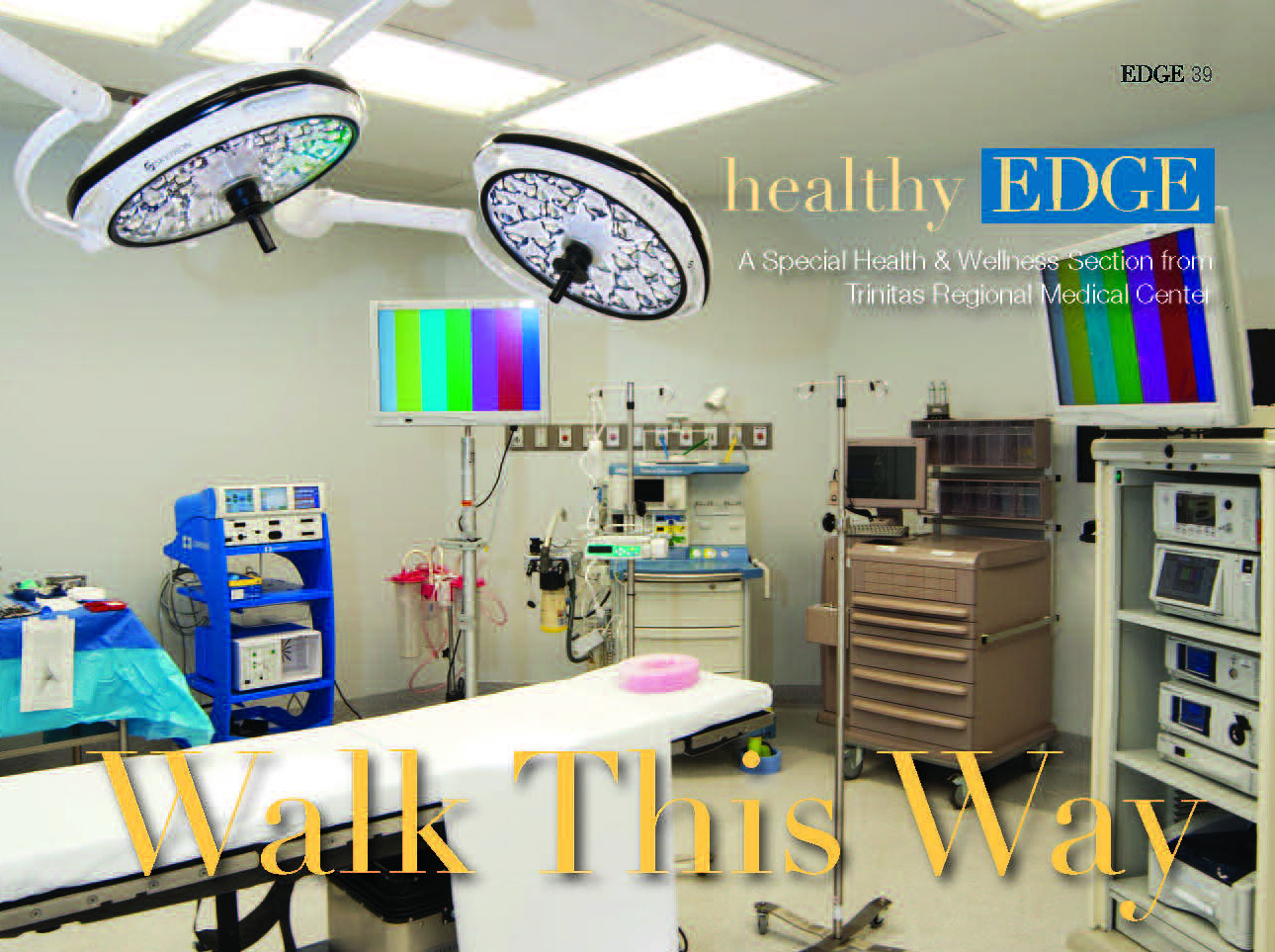Good girls don’t trade a future in medicine for a career in comedy. If that’s not an old saying, maybe it should be. Or maybe not. Retta, who stars with Christina Hendricks and Mae Whitman in the NBC “dramedy” Good Girls, veered off the pre-med track at Duke to work as a stand-up—and then parlayed her success on the stage into an iconic role on Parks and Recreation. Though not exactly a prescription for Hollywood stardom, in Retta’s case, it produced a positive outcome, and the rest is history. The daughter of Liberian immigrants who settled in the Garden State, she brings a unique work ethic to the characters she plays and, as Gerry Strauss discovered, a healthy dose of Jersey swagger, too.
EDGE: How have you been keeping yourself safe and sane during the pandemic?
RETTA: I’m a big old scaredy-cat, so at the beginning of quarantine, every little thing I thought I had it. Sniffles? Oh, I got it. Cough? Oh, I  got it. I got an ache? Oh, I got it. My eye’s twitching? [laughs] It’s COVID! So then I had a friend tell me to download the Calm app and meditate, so I did that for a while. What really helped me was just that I didn’t watch the news anymore. Honestly, that helped me a lot. But in late November, I had knee replacement surgery. So I went back into stress mode. It’s been a real ride!
got it. I got an ache? Oh, I got it. My eye’s twitching? [laughs] It’s COVID! So then I had a friend tell me to download the Calm app and meditate, so I did that for a while. What really helped me was just that I didn’t watch the news anymore. Honestly, that helped me a lot. But in late November, I had knee replacement surgery. So I went back into stress mode. It’s been a real ride!
EDGE: You’re dealing with things from a West Coast perspective now, but fans of yours know that you are originally a Jersey girl. Any thoughts on growing up in the Garden State?
RETTA: I think it was pretty typical in that you just tried to fit in, tried to get to the mall on the weekends where all the kids hung out. I have immigrant parents, so home was a little different than my friends.
EDGE: How so?
RETTA: Like with schoolwork. I remember friends getting cash for grades. You get $10 for an A, and $5 for a B, and a dollar for a C. [laughs] I was like, first of all, you get money for a C?
EDGE: Did you not enjoy yourself in school?
RETTA: I liked school, but it was very much centered around doing well so that you could go to college. So school was very important for me. I think it’s part of the immigrant life. Not that I didn’t socialize, because I was very active in school—I was on student council and the choir and a cheerleader. French club, math club. So I was busy, but I didn’t party or anything like that. So, in that regard, I didn’t really experience the high school partying life, but I was so busy with everything else I don’t know that I really even noticed it until I was older. I got the high off of the good grades.
EDGE: Success in science and in comedy both require a lot of hard work and patience. Do you think the work ethic you developed for one helped you in the other?
RETTA: It did in that I’m an empirical thinker. I’m that person: If you want to do something, what are the steps to do it? My goal was to have my own sitcom. So I watched a lot of sitcoms. I noticed that most of the leads in sitcoms used to be stand-up comedians, which is why I started stand-up. I was like, Oh, that’s the path that Roseanne, Tim Allen, all these people took. That must be the way to do it. So that’s why I started. Also, I’m a big fan of checking things off of a list. That’s something that has stayed with me since high school, where it’s like you have all these things to do, and if you don’t do them, you’re not going to get the grade. So that’s another thing that I still do. I love a list, and I love checking stuff off of a list. That kind of thing has stayed with me. I certainly feel like I work harder now, just because being a lead in a show requires more work. You have to spend more time learning lines. You spend more time on set, that kind of thing. But because I know this is what I really want to do, it’s not hard work to me. I get to go do the work I love as opposed to “needing” to study.
 EDGE: It doesn’t sound like you had a mentor or a role model when you launched your entertainment career.
EDGE: It doesn’t sound like you had a mentor or a role model when you launched your entertainment career.
RETTA: I don’t know that I got any advice, really. I used to read Entertainment Weekly and People magazine cover-to-cover, and I would just hear different things. One thing I remember was that people would always say Sandra Bullock was really great with the crew. It made sense to just be a good person and be the kind of person people would want to be around. That was something that stuck with me—but it wasn’t necessarily an advice thing. I will say, while working with Amy Poehler [on Parks and Recreation], one of the things I realized that we had in common was that we always believed it would happen. There was never a doubt that I would get to where I wanted to go in this industry. For me, it was just an anxiousness as to when. How long was it going to take? I remember being in the hair and makeup trailer one day when we were at work, and Amy and I had a conversation about how we always just knew. I think it made it easier to deal with whatever struggles we had on our way up because, in the back of our minds, well, we knew it’s going to happen. I think that made being here and living in a studio apartment or sleeping on a friend’s floor fine, because it was just an interim part of what was to come.

EDGE: Speaking of Amy, how did you first get cast on Parks and Recreation?
RETTA: I got a message from my manager at the time that I had an audition for a new sitcom. It was going to be kind of like The Office in that it was a mockumentary, and one of the creators was the creator of The Office. I went in, I read for the room, which included Mike Schur and Greg Daniels and a couple other people and some casting folks. I was never a great auditioner. I hate auditions. I get sick to my stomach. But I’m good in a room just chatting. At the end of my audition, I had just gotten this watch and it was very blingy. It was one of those things—they call them toy watches—and they’re just super shiny, they’re ridiculous. I remember Mike Schur being like, “Hey, cool watch.” Oh my God, I gave him a good ten minutes on the watch: “You have to be invited to be a member. If you email me, I will submit you to be invited.” He was like, “I’m all good on the watch.” But I was chatty, and I think he thought it would be funny, like he could bring that into the character. Now, mind you, my character Donna did not turn out to be the chatty lady who was trying to sell you a watch, but I think it made me seem funny in the room outside of the read. So I credit my audition success to me being able to talk about this stupid watch for so long. [laughs]
EDGE: Donna grew into a primary character on the show. What did you admire about her?
RETTA: I love that she was very independent. She knew what she wanted and there was nothing that was going to change her mind. She wasn’t going to be persuaded out of something. I appreciated most of the characters in the show—how loyal they were to each other and how supportive they were. I loved that about the friendships in general on the show, and that Donna knew what she wanted and she was going to get it by crook or by hook.
EDGE: Fans of Parks and Rec—and of internet memes in general—are familiar with one of the show’s most famous catchphrases: TREAT YO’ SELF. Did you ever think that this made-up holiday would stand the test of time?
RETTA: Nope. Sure didn’t. I was not really good at reading. I just tried to make it real for me. I never could tell when something was going to be funny. I remember my friend, Brittany, was on set that day visiting me, and she was there for the talking heads with me and Aziz [Ansari]. She was like, “Ooh, that’s going to be really funny. That’s going to be huge.” I was like, Really? It’s just silly Tom and Donna stuff. And she’s like, “No, trust me, it’s going to be huge.” I was working this one night, and I just remember getting a lot of tags on Twitter. I was like, What is going on? because I didn’t really do Twitter that much, but I just remember getting blown up. When I got home, I saw that it was that episode. Then I looked on Twitter and I saw that everybody was tweeting TREAT YO’ SELF and tagging me. I was like, Whoa. Right!
EDGE: You do a ton of voice acting. What makes that type of work appealing to you?
RETTA: Well, the best thing about voiceover work is no hair and makeup. I don’t even have to leave the house now! But voiceover is something that I really wanted to do, particularly when I was doing stand-up, because when you first start out, you’re not making a whole lot of money. If you can get voiceover work, or commercials, you can kind of like float by while you’re still trying to make the stand-up work. So it’s something that I really wanted, but I didn’t really get a lot of opportunity. I didn’t have a voiceover agent. I didn’t really know exactly how to do it. Once you start getting viability from things like Parks and Rec, then stuff starts coming in, so I started getting more auditions. I think the first thing that I booked was a Nickelodeon thing, and I was so excited, but I had been auditioning forever. It finally clicked like five or six years ago. And even so, it wasn’t like I  was getting a whole lot of regular gigs—I just got my first commercial voiceover during quarantine, and it was the most exciting thing ever, doing the Rocket Mortgage commercials. I’m like, Woo-hoo, that’s me! I literally pause it and watch it. I watched the commercials to hear my voice. It’s like, you’re on TV, you have a show that comes on weekly. But there’s something about the voiceover commercial that excites me.
was getting a whole lot of regular gigs—I just got my first commercial voiceover during quarantine, and it was the most exciting thing ever, doing the Rocket Mortgage commercials. I’m like, Woo-hoo, that’s me! I literally pause it and watch it. I watched the commercials to hear my voice. It’s like, you’re on TV, you have a show that comes on weekly. But there’s something about the voiceover commercial that excites me.
EDGE: What do you enjoy about Good Girls and your role on the show?
RETTA: It was the first time I felt that I got to play a fully realized character. When I read it, I knew exactly who the character was based on in the pilot script. I literally cried reading what she was going through. It gives me so much joy and satisfaction to feel like I’m playing a person that lives in the world. I was all about comedy when I first came out to LA, so it wasn’t something that I really even thought that I would need. But I read this script and was like, God, I would love to play her. It just excited me that there was a chance that I would get to play this character that had her family, and loved her husband, and was going through trials and tribulations, but was still trying to be happy—and none of it was based on her weight or anything like that.
EDGE: Good Girls has built a following thanks to its drama and dark humor. With Season 4 here, for those who are late to the party, why should they binge the first three seasons to catch up?
RETTA: It’s got heists. There are cliffhangers. There’s comedy. And you’re right, it can get dark—particularly Season 3, where even we were freaked out when we were reading the scripts. I think it takes you on a ride that you don’t expect.
EDGE: A lot of parents of college-age and twenty-something kids read this magazine so I have to ask, how do you go from Duke pre-med to stand-up comedy?
RETTA: When I went to school for the first time, living out of my parents’ house, the first time making my own decisions—when to do laundry, when to go to bed, that kind of thing—I liked that. I got to kind of learn about myself and what made me happy. When I graduated from Duke, I still wanted to go into medicine, but I kind of wanted a break. I knew that [med school] was going to be intense, so I wanted a break before. I took the year off, but I was too afraid to leave science, so I stayed in North Carolina and did chemistry. I mean, some people would be like, really [laughs] that was your break? But that was the first time I lived alone and was left with my thoughts. Which is when I realized what I really wanted to do, which was to perform.
EDGE: Was that a difficult decision to explain to your family?
RETTA: Not so much. I mean, my parents, as immigrants, tend to be very like focused on education and going into the professional fields that are lucrative enough to support you—you know, doctors, lawyers, that kind of thing. But my they were still supportive. I remember calling them and saying, “I think I’m going to drive cross-country to LA.” I had already told them I had started stand-up. My mom said, “Don’t embarrass your father…you’re carrying around his last name.” Which is part of the reason why I dropped my last name. She also reminded me that I’d spent four years in college, so don’t waste it. “If you’re going to do it, do it,” she said. “Don’t half-ass it and just play around.” My father’s big thing was whatever you do, get health insurance…because we can’t afford to take care of you if something goes down.
EDGE: And what did he say?
RETTA: “Drive safe and don’t call us if you get into an accident.” 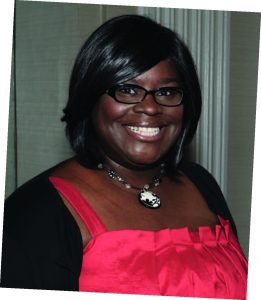
Editor’s Note: Retta, aka Marietta Sangai Sirleaf, was born in Newark and grew up in Middlesex and Monmouth Counties. She graduated from Duke in 1992 and launched her stand-up career in Raleigh, North Carolina. She made her TV debut on a 1997 episode of Moesha and her movie debut in the 2002 cult classic Slackers. In addition to Parks and Rec and Good Girls, Retta also had a recurring role on Girlfriends’ Guide to Divorce with FOE (Friend of Edge) Lisa Edelstein.
 WELCOMING RETIREMENT
WELCOMING RETIREMENT CUBS WIN
CUBS WIN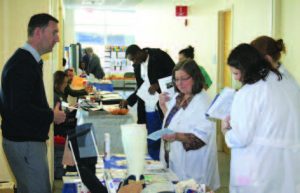 HEALING RULES
HEALING RULES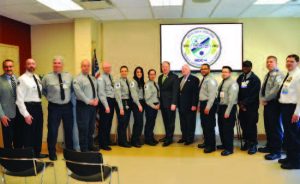 20 YEARS… STILL RESPONDING
20 YEARS… STILL RESPONDING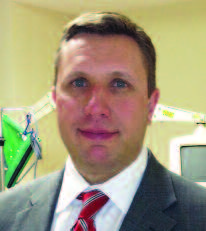 TAKING COMMUNITY ACTION
TAKING COMMUNITY ACTION 40 YEARS…STILL ADVANCING
40 YEARS…STILL ADVANCING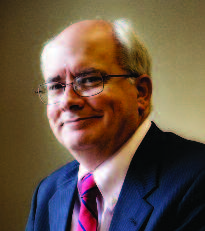 PREPARED TO LEAD
PREPARED TO LEAD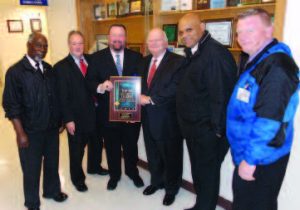 SECURE AROUND THE CLOCK
SECURE AROUND THE CLOCK

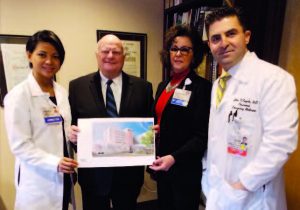
 Trinitas has successfully integrated advanced emergency lifesaving treatment methods into the emergency angioplasty treatment process, Dr. D’Angelo points out. “Our team effort uses a ’30-30-30’ rhythm. 30 minutes for EMS responders to reach the patient, perform an EKG, and get the patient to us. 30 minutes for the Emergency Team to receive, stabilize and transport the patient to the cath lab. Then, 30 minutes for the Catheterization Team to open the occluded artery.”
Trinitas has successfully integrated advanced emergency lifesaving treatment methods into the emergency angioplasty treatment process, Dr. D’Angelo points out. “Our team effort uses a ’30-30-30’ rhythm. 30 minutes for EMS responders to reach the patient, perform an EKG, and get the patient to us. 30 minutes for the Emergency Team to receive, stabilize and transport the patient to the cath lab. Then, 30 minutes for the Catheterization Team to open the occluded artery.”
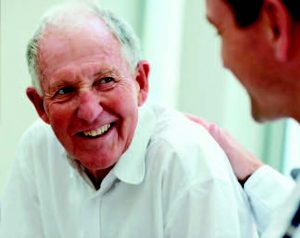


 Andrea S. Zimmern, MD, FACS
Andrea S. Zimmern, MD, FACS
 Do you have a hot topic for Dr. D’Angelo and his Trinitas ER team?
Do you have a hot topic for Dr. D’Angelo and his Trinitas ER team?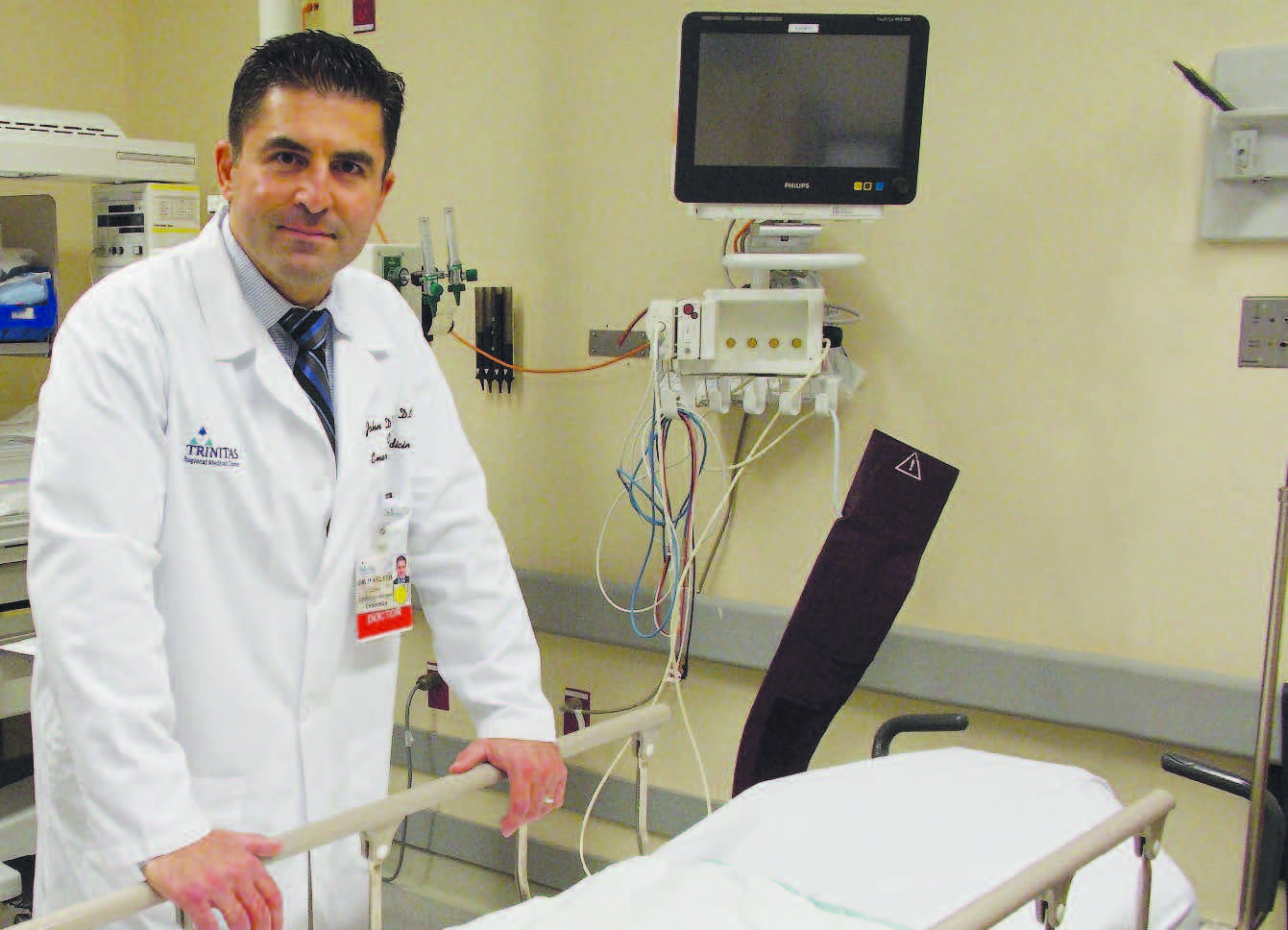
 Experimental Drug Looks Good vs. MRSA
Experimental Drug Looks Good vs. MRSA
 A Blunt Assessment of Marijuana
A Blunt Assessment of Marijuana
 Obesity and the Brain
Obesity and the Brain


 BEAT GENERATION
BEAT GENERATION VISION QUEST
VISION QUEST FINANCIAL AIDE
FINANCIAL AIDE LIGHTEN UP
LIGHTEN UP GET SMART
GET SMART INTO THE WOOD
INTO THE WOOD ON THE BALL
ON THE BALL WARMING TREND
WARMING TREND LOBE STORY
LOBE STORY BACK TO THE FUTURE
BACK TO THE FUTURE SWEET DREAMS
SWEET DREAMS LEG CANDY
LEG CANDY GYM DANDY
GYM DANDY THERE’S THE RUB
THERE’S THE RUB  PAIN MANAGEMENT
PAIN MANAGEMENT UP IN THE AIR
UP IN THE AIR TOE HOLD
TOE HOLD
 Avid4Adventure in Boulder, CO teaches hiking, biking, climbing and paddling—building skills, grit and determination. “Kids from all over the country come for our outdoor adventures,” says Ileana Street. “Stand-up paddle boarding, rock climbing, and mountain biking are just some of our activity offerings. We make sports inviting not intimidating. It’s empowering to master a new skill and it’s a confidence-booster.” Campers stay in comfortable (but not cushy) cabins, and meal-wise, Avid4Adventure accommodates any kind of diet. Programs change every year so that repeat guests are introduced to new challenges.
Avid4Adventure in Boulder, CO teaches hiking, biking, climbing and paddling—building skills, grit and determination. “Kids from all over the country come for our outdoor adventures,” says Ileana Street. “Stand-up paddle boarding, rock climbing, and mountain biking are just some of our activity offerings. We make sports inviting not intimidating. It’s empowering to master a new skill and it’s a confidence-booster.” Campers stay in comfortable (but not cushy) cabins, and meal-wise, Avid4Adventure accommodates any kind of diet. Programs change every year so that repeat guests are introduced to new challenges. Bold Earth in Golden, CO, offers teenagers an adventure-travel summer camp filled with exploration, learning and discovery. The camp focuses on small groups and promotes leadership, teamwork and excellence in a supportive environment. “We introduce kids, in a very successful way, how to be in the game instead of simply playing the game,” says Abbott Wallis. “There are no locked doors, no HBO, and it’s all super-honest. We teach kids how to connect with others. We turn the entertainment on while turning the computers off. In bringing out laughter, dancing, and singing, we make sure that when kids return home they have a big story to tell—It was incredible…I was incredible.” Since 1976, over 15,000 students from 50 states (and more than 55 countries) have attended Bold Earth. Parents and teens are actually interviewed before being accepted.
Bold Earth in Golden, CO, offers teenagers an adventure-travel summer camp filled with exploration, learning and discovery. The camp focuses on small groups and promotes leadership, teamwork and excellence in a supportive environment. “We introduce kids, in a very successful way, how to be in the game instead of simply playing the game,” says Abbott Wallis. “There are no locked doors, no HBO, and it’s all super-honest. We teach kids how to connect with others. We turn the entertainment on while turning the computers off. In bringing out laughter, dancing, and singing, we make sure that when kids return home they have a big story to tell—It was incredible…I was incredible.” Since 1976, over 15,000 students from 50 states (and more than 55 countries) have attended Bold Earth. Parents and teens are actually interviewed before being accepted. Hi-Hills Day Camp at Gill St. Bernard’s in Gladstone, NJ offers a variety of programs for children ages 3 to 15 across 10 summer weeks. Whether a family’s goal is enrichment, academics, sports, fine arts or traditional camp programs, Hi-Hill has become quite good at offering something for everyone. Traditional camp activities include instructional tennis, yoga, archery, pottery, nature, technology, swimming, and dance. Teen travel programs (for ages 13 to 15) offer a mix of day camp activities and travels to nearby attractions, plus one five-day overnight trip. Enrichment programs includes academics, athletics, creative and performing arts—all which can be combined with any of Hi-Hills day camps. “What makes Hi-Hills unique,” says Allyson Day, “is that we are one of the most flexible camps. We recognize that summer is just as busy, if not busier, than a hectic school year. With that in mind, children can attend one or more of our programs for a half-day, half-week or whatever fits into their schedule.”
Hi-Hills Day Camp at Gill St. Bernard’s in Gladstone, NJ offers a variety of programs for children ages 3 to 15 across 10 summer weeks. Whether a family’s goal is enrichment, academics, sports, fine arts or traditional camp programs, Hi-Hill has become quite good at offering something for everyone. Traditional camp activities include instructional tennis, yoga, archery, pottery, nature, technology, swimming, and dance. Teen travel programs (for ages 13 to 15) offer a mix of day camp activities and travels to nearby attractions, plus one five-day overnight trip. Enrichment programs includes academics, athletics, creative and performing arts—all which can be combined with any of Hi-Hills day camps. “What makes Hi-Hills unique,” says Allyson Day, “is that we are one of the most flexible camps. We recognize that summer is just as busy, if not busier, than a hectic school year. With that in mind, children can attend one or more of our programs for a half-day, half-week or whatever fits into their schedule.” Otter Bar Lodge Kayak School on the Salmon River in Northern California is a premier kayak school. Its location may be remote, but the atmosphere is intimate and friendly. “Our concept is simple: keep it small, personable and first-class,” says Peter Sturges. “While we specialize in river kayaking, we also offer a number of other outdoor activities. Some kids come as kayak newbies, while others are experienced. Many come back year after year.” There is no Internet service for the kids, adds Sturges’s wife, Kristy, and they aren’t allowed to bring any electronics. “We keep them busy from dawn to dusk, so they don’t miss their smartphones or video games,” she says. “We have found over our thirty years in operation that given the choice, kids would rather be outdoors, learning or perfecting a new sport than typing away on electronics.” She adds the kids actually enjoy the remoteness, church-like silence and absence of tech distractions.
Otter Bar Lodge Kayak School on the Salmon River in Northern California is a premier kayak school. Its location may be remote, but the atmosphere is intimate and friendly. “Our concept is simple: keep it small, personable and first-class,” says Peter Sturges. “While we specialize in river kayaking, we also offer a number of other outdoor activities. Some kids come as kayak newbies, while others are experienced. Many come back year after year.” There is no Internet service for the kids, adds Sturges’s wife, Kristy, and they aren’t allowed to bring any electronics. “We keep them busy from dawn to dusk, so they don’t miss their smartphones or video games,” she says. “We have found over our thirty years in operation that given the choice, kids would rather be outdoors, learning or perfecting a new sport than typing away on electronics.” She adds the kids actually enjoy the remoteness, church-like silence and absence of tech distractions. EXPLORE MORE
EXPLORE MORE
 Wild Whatcom in Bellingham, WA immerses boys and girls in exploration of the Northwest’s vast forests, wild rivers, mountainous meadows, tumbling waterfalls and pebbled beaches. “We aim to help kids discover their capabilities through suitable challenges, to better understand themselves and others,” says Laurel Peak. Wild Whatcom campers hike the Cascade ridges, watch the sunset over the Pacific, sleep under a star-studded sky, and play games that promote meaningful connections and new discoveries.
Wild Whatcom in Bellingham, WA immerses boys and girls in exploration of the Northwest’s vast forests, wild rivers, mountainous meadows, tumbling waterfalls and pebbled beaches. “We aim to help kids discover their capabilities through suitable challenges, to better understand themselves and others,” says Laurel Peak. Wild Whatcom campers hike the Cascade ridges, watch the sunset over the Pacific, sleep under a star-studded sky, and play games that promote meaningful connections and new discoveries.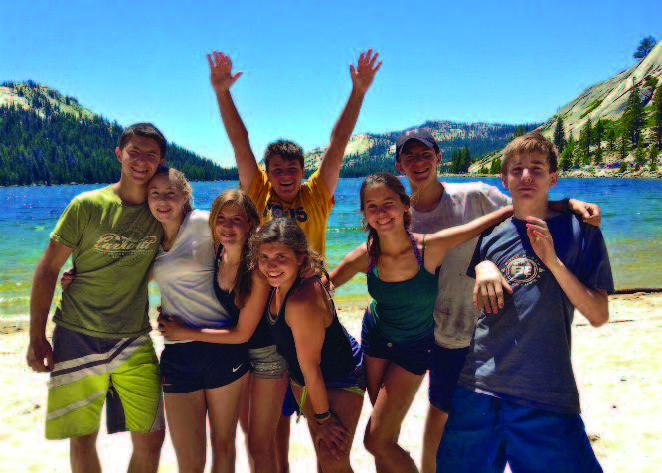

 got it. I got an ache? Oh, I got it. My eye’s twitching? [laughs] It’s COVID! So then I had a friend tell me to download the Calm app and meditate, so I did that for a while. What really helped me was just that I didn’t watch the news anymore. Honestly, that helped me a lot. But in late November, I had knee replacement surgery. So I went back into stress mode. It’s been a real ride!
got it. I got an ache? Oh, I got it. My eye’s twitching? [laughs] It’s COVID! So then I had a friend tell me to download the Calm app and meditate, so I did that for a while. What really helped me was just that I didn’t watch the news anymore. Honestly, that helped me a lot. But in late November, I had knee replacement surgery. So I went back into stress mode. It’s been a real ride!
 EDGE: It doesn’t sound like you had a mentor or a role model when you launched your entertainment career.
EDGE: It doesn’t sound like you had a mentor or a role model when you launched your entertainment career.

 was getting a whole lot of regular gigs—I just got my first commercial voiceover during quarantine, and it was the most exciting thing ever, doing the Rocket Mortgage commercials. I’m like, Woo-hoo, that’s me! I literally pause it and watch it. I watched the commercials to hear my voice. It’s like, you’re on TV, you have a show that comes on weekly. But there’s something about the voiceover commercial that excites me.
was getting a whole lot of regular gigs—I just got my first commercial voiceover during quarantine, and it was the most exciting thing ever, doing the Rocket Mortgage commercials. I’m like, Woo-hoo, that’s me! I literally pause it and watch it. I watched the commercials to hear my voice. It’s like, you’re on TV, you have a show that comes on weekly. But there’s something about the voiceover commercial that excites me.





 His thumbprints are on projects ranging from a rambling rose garden in Bellingham, Washington and a rose garden and propagation program on the Frank Lloyd Wright-designed Southern Florida College campus, to a vast heritage rose collection in Chambersville, Texas and a children’s plant workshop a bit closer to home, in Harlem.
His thumbprints are on projects ranging from a rambling rose garden in Bellingham, Washington and a rose garden and propagation program on the Frank Lloyd Wright-designed Southern Florida College campus, to a vast heritage rose collection in Chambersville, Texas and a children’s plant workshop a bit closer to home, in Harlem. With the influx of genetically engineered roses, Scanniello’s approach to heritage roses is almost like a spiritual calling. “Rosarians have a responsibility to preserve species roses and their oldest known hybrids,” he explains. “Modern-day rose hybridizers are turning to these oldest roses for the key to creating healthy roses. Without the preservation of species and old roses, a valuable genetic link to disease resistance will be lost.”
With the influx of genetically engineered roses, Scanniello’s approach to heritage roses is almost like a spiritual calling. “Rosarians have a responsibility to preserve species roses and their oldest known hybrids,” he explains. “Modern-day rose hybridizers are turning to these oldest roses for the key to creating healthy roses. Without the preservation of species and old roses, a valuable genetic link to disease resistance will be lost.” The author of seven books on roses, Scanniello approaches his subject like a detective. His mission to find and preserve roses spans the world and is a bit of a race against time, as uneducated gardeners are planting newer breeds and eschewing the older roses. It is a mission that often leads him to some unexpected places. One source, for example, was discovered in East Germany, behind the former Iron Curtain. Sangerhausen Rose Garden—a time-warp, hermetically-sealed garden—had remained untouched from before World War II, offering healthy roses that had escaped the heavy-handed adulterations of modern-day hybridizers. Another fruitful, if macabre, source of heritage roses are old cemeteries. There, like ghosts surrounding old, unkempt graves, grow some of the best examples of heritage roses from another era.
The author of seven books on roses, Scanniello approaches his subject like a detective. His mission to find and preserve roses spans the world and is a bit of a race against time, as uneducated gardeners are planting newer breeds and eschewing the older roses. It is a mission that often leads him to some unexpected places. One source, for example, was discovered in East Germany, behind the former Iron Curtain. Sangerhausen Rose Garden—a time-warp, hermetically-sealed garden—had remained untouched from before World War II, offering healthy roses that had escaped the heavy-handed adulterations of modern-day hybridizers. Another fruitful, if macabre, source of heritage roses are old cemeteries. There, like ghosts surrounding old, unkempt graves, grow some of the best examples of heritage roses from another era. Starting your own heritage rose garden, Scanniello insists, is not as daunting a task as one might imagine. For starters, he recommends planting a heritage rose in a 24-inch pot or wooden barrel, placed in a location that gets plenty of sun. It should be watered either in the early morning or late afternoon, near the mid-day sun. He encourages New Jersey gardeners to plant roses hailing from New Jersey, such as a pink Jersey Beauty, which was created in South Orange, or South Orange Perfection, or New Dawn, a continually blooming genetic off-shoot of the Dr. van Fleet rose. Other good strains of roses that will bloom continually are the Parade or Dream Girl, bred by Martin Jacobus in Ridgefield in the 1950s and ’60s.
Starting your own heritage rose garden, Scanniello insists, is not as daunting a task as one might imagine. For starters, he recommends planting a heritage rose in a 24-inch pot or wooden barrel, placed in a location that gets plenty of sun. It should be watered either in the early morning or late afternoon, near the mid-day sun. He encourages New Jersey gardeners to plant roses hailing from New Jersey, such as a pink Jersey Beauty, which was created in South Orange, or South Orange Perfection, or New Dawn, a continually blooming genetic off-shoot of the Dr. van Fleet rose. Other good strains of roses that will bloom continually are the Parade or Dream Girl, bred by Martin Jacobus in Ridgefield in the 1950s and ’60s.
 Alan Richman, restaurant critic for GQ magazine, dean of food journalism and new media at the International Culinary Center in New York, author of the acclaimed book Fork It Over as well as thousands of newspaper and magazine articles, and recipient of the Bronze Star in the Vietnam War, is having lunch at Martino’s Cuban Restaurant on West Main Street in Somerville. It is a hot summer day.
Alan Richman, restaurant critic for GQ magazine, dean of food journalism and new media at the International Culinary Center in New York, author of the acclaimed book Fork It Over as well as thousands of newspaper and magazine articles, and recipient of the Bronze Star in the Vietnam War, is having lunch at Martino’s Cuban Restaurant on West Main Street in Somerville. It is a hot summer day. His grandparents, Rose and Nathan Rabinowitz, belonged to the Orthodox temple in Somerville, where young Richman “sat through services in 107-degree heat.” Though his grandmother “wasn’t a very good cook,” she did make a “fine kuchin.”
His grandparents, Rose and Nathan Rabinowitz, belonged to the Orthodox temple in Somerville, where young Richman “sat through services in 107-degree heat.” Though his grandmother “wasn’t a very good cook,” she did make a “fine kuchin.”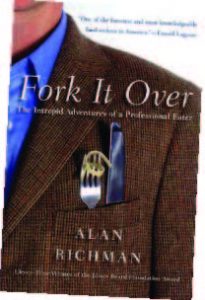 FOR FUTURE REFERENCE
FOR FUTURE REFERENCE
 Café Z • Stuffed Meatball
Café Z • Stuffed Meatball Chestnut Chateau • Pan-Seared Tilefish
Chestnut Chateau • Pan-Seared Tilefish George and Martha’s American Grille • Pork Osso Buco
George and Martha’s American Grille • Pork Osso Buco The Manor • Surf & Turf
The Manor • Surf & Turf Mario’s Tutto Bene • Vinegar Pork Chops
Mario’s Tutto Bene • Vinegar Pork Chops The Office Tavern Grill • Chicken & Waffles
The Office Tavern Grill • Chicken & Waffles The Office Beer Bar & Grill • The Wedge Burger
The Office Beer Bar & Grill • The Wedge Burger Piattino Neighborhood Bistro • Braised Chicken & Linguine
Piattino Neighborhood Bistro • Braised Chicken & Linguine Publick House • Blackened Scottish Salmon
Publick House • Blackened Scottish Salmon Rio Rodizio • Roasted Meats
Rio Rodizio • Roasted Meats Thai Amarin • Drunken Noodles
Thai Amarin • Drunken Noodles
 There is a rule of thumb in the restaurant business: Try to be everything to all people, and the best you’ll be is Applebee’s. The worst you’ll be is out of business. That being said, Rella’s Italian Tavern proves you can serve two masters, both literally and figuratively. The restaurant’s menu offers two ways to go (as its name implies), imaginative Italian cuisine or reliable tavern fare. Co-owner Sal Chiarella knows his way around both kitchens. He created and sold both the neighborhood go-to spot Harborside Grill in Atlantic Highlands and Fratello’s, a high-end Italian eatery in Sea Girt. Both are still going strong.
There is a rule of thumb in the restaurant business: Try to be everything to all people, and the best you’ll be is Applebee’s. The worst you’ll be is out of business. That being said, Rella’s Italian Tavern proves you can serve two masters, both literally and figuratively. The restaurant’s menu offers two ways to go (as its name implies), imaginative Italian cuisine or reliable tavern fare. Co-owner Sal Chiarella knows his way around both kitchens. He created and sold both the neighborhood go-to spot Harborside Grill in Atlantic Highlands and Fratello’s, a high-end Italian eatery in Sea Girt. Both are still going strong. ON THE TAVERN SIDE
ON THE TAVERN SIDE
 FIT FOR A KING
FIT FOR A KING LINE ITEM
LINE ITEM ALL THAT GLITTERS
ALL THAT GLITTERS PETAL TO THE METAL
PETAL TO THE METAL NUMBERS GAME
NUMBERS GAME FAIR & SQUARE
FAIR & SQUARE ENDLESS LOVE
ENDLESS LOVE SPRING FEVER
SPRING FEVER GOLD FINGER
GOLD FINGER SIMPLY BRILLIANT
SIMPLY BRILLIANT FUTURE PERFECT
FUTURE PERFECT TRUE COLORS
TRUE COLORS MAKE IT COUNT
MAKE IT COUNT PURPLE PASSION
PURPLE PASSION NET GAINS
NET GAINS CRAZY 8’S
CRAZY 8’S SWING TIME
SWING TIME









 Lewis & Clark College • Oregon
Lewis & Clark College • Oregon
 Georgian Court University • New Jersey 5
Georgian Court University • New Jersey 5
 ALL IN THE FAMILY
ALL IN THE FAMILY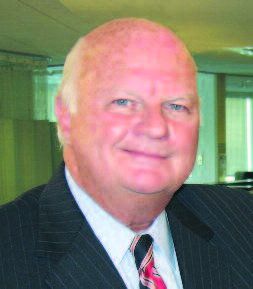 POWER PLAYER
POWER PLAYER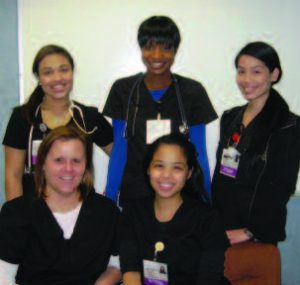 DESIGNED FOR NURSES
DESIGNED FOR NURSES COLON HEALTH… FROM A TO Z
COLON HEALTH… FROM A TO Z A LOOK INSIDE TRINITAS
A LOOK INSIDE TRINITAS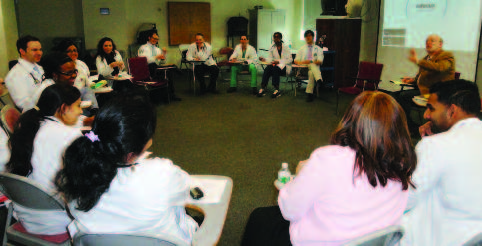 BEYOND MEDICINE
BEYOND MEDICINE SHADOWING GETS AN A+
SHADOWING GETS AN A+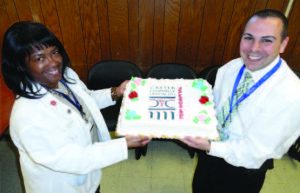






 They Do More Than Play Football at LSU
They Do More Than Play Football at LSU The Five-Second Rule: A Second Look
The Five-Second Rule: A Second Look Surprising Findings in Oral Cancer Study
Surprising Findings in Oral Cancer Study
 Home Games
Home Games
 Number One Not So Fun
Number One Not So Fun
 The Center features state of the art operating rooms offering comprehensive outpatient surgical procedures including plastic surgery, laparoscopic gynecological procedures, gallbladder surgery, hernia repair, orthopedic, vascular, podiatric, and pain management surgeries as well as cutting edge hemorrhoid surgery. Andrea Zimmern, MD, Colorectal Surgeon at Trinitas, is the first surgeon in Union County to carry out Transanal Hemorrhoidal Dearterialization (THD) procedures at the Center. “The groundbreaking THD procedure is virtually painless,” Dr. Zimmern says. “We tie off all the blood vessels that feed the hemorrhoid, and work in an area of the anal canal that has no pain sensory innervation. It’s a drastic, positive change from traditional surgery—patients are back to normal activities usually in less than a week. THD changes the game because we’ve removed the painful discomfort while minimizing recovery time. That’s an amazing advancement when you consider what hemorrhoid surgery used to mean.”
The Center features state of the art operating rooms offering comprehensive outpatient surgical procedures including plastic surgery, laparoscopic gynecological procedures, gallbladder surgery, hernia repair, orthopedic, vascular, podiatric, and pain management surgeries as well as cutting edge hemorrhoid surgery. Andrea Zimmern, MD, Colorectal Surgeon at Trinitas, is the first surgeon in Union County to carry out Transanal Hemorrhoidal Dearterialization (THD) procedures at the Center. “The groundbreaking THD procedure is virtually painless,” Dr. Zimmern says. “We tie off all the blood vessels that feed the hemorrhoid, and work in an area of the anal canal that has no pain sensory innervation. It’s a drastic, positive change from traditional surgery—patients are back to normal activities usually in less than a week. THD changes the game because we’ve removed the painful discomfort while minimizing recovery time. That’s an amazing advancement when you consider what hemorrhoid surgery used to mean.” The Center opened for business in March and will help Trinitas handle a growing demand for same-day surgery. From 2012 to 2013, the hospital experienced a rise of more than 15 percent in these types of procedures, and expects 10 to 15 percent growth in this category to remain steady for several years. About 45 percent of the surgeries performed at Trinitas are already of the outpatient variety.
The Center opened for business in March and will help Trinitas handle a growing demand for same-day surgery. From 2012 to 2013, the hospital experienced a rise of more than 15 percent in these types of procedures, and expects 10 to 15 percent growth in this category to remain steady for several years. About 45 percent of the surgeries performed at Trinitas are already of the outpatient variety.